A few years ago, my friend celebrated her birthday at one of the city's newest culinary hotspots.
Greeted by two faux-marble lion gargoyles, we entered an aromatic restaurant, wafting Indian spices and freshly cooked pizza dough. On the menu: Italian food meets Indian cuisine.
Here, I soon learned that there is a big difference between dipping one's toe into fusion cuisine and dousing a risotto in butter chicken sauce (also — if a mango lassi has a lingering fizz, it will definitely give you diarrhoea).
If the pleather seating and mirror balls weren't already an indication this place was worthy of a Ramsay's Kitchen Nightmares episode, the overpowering tastes of the 'korma carbonara' or the 'tandoori arancini balls' certainly affirmed it. I guess some distinct worldly flavours have as much compatibility as oil and water.
But who could really blame the aspiring restauranteurs for Frankensteining our food that night? Fusion cuisine is responsible for some of the world's most delicious favourites: Tex Mex, poke bowls, ceviche, Bahn mi, cronuts and depending on which side of pineapple-on-pizza you sit, the great Hawaiian deep pan.
It's just that maybe good fusion works best when the creation is at the hands of the food lovers, flavour experts and let's face it, professional chefs, rather than hospo hotheads looking to fill a gap in the market.
Celebrity chef and one part of NITV's On Country Kitchen is one man for such a challenge. In the second season of On Country Kitchen, he brings inspiring new life to overseas dishes using Australia's native ingredients.
Native Spice Stir Fry
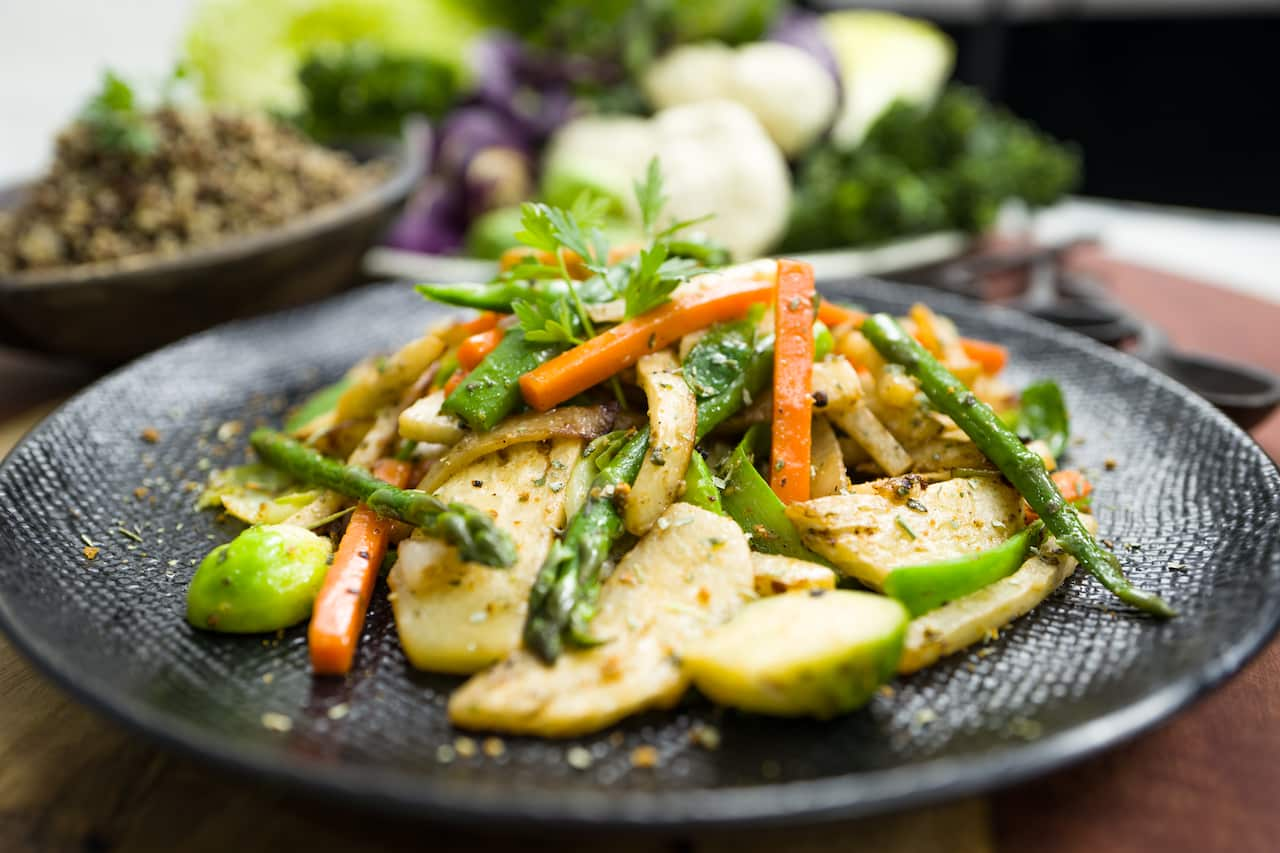
Native Spice Stir Fry by Mark Olive (Supplied) Source: NITV
Stir Fry is one of those beloved peasant foods — dishes that are made from accessible and inexpensive ingredients — and is a great way of jam-packing nutritional vegetables into one meal.
But it's not a 'dish' so to speak, but rather a cooking technique. Originating in China during the Ming dynasty, it's the cathartic process of dynamically sautéing tasty produce and seasoning it with fragrant Asian flavours.
Australia's bush tomato is most accessible in dried, ground, powder form. It's described as having an earthy, caramel flavour and a gives a bitter kick if sprinkled a little too enthusiastically.
Similarly, saltbush is another flavourful spice, derived from a grey-blue shrub grown in drier parts of the country. Ground up, these leaves are a fantastic table salt alternative; bitey, with a herby aftertaste.
In one bite? Let Asian culinary techniques evoke the aromatics of the Australian bush.
Macadamia Baklava
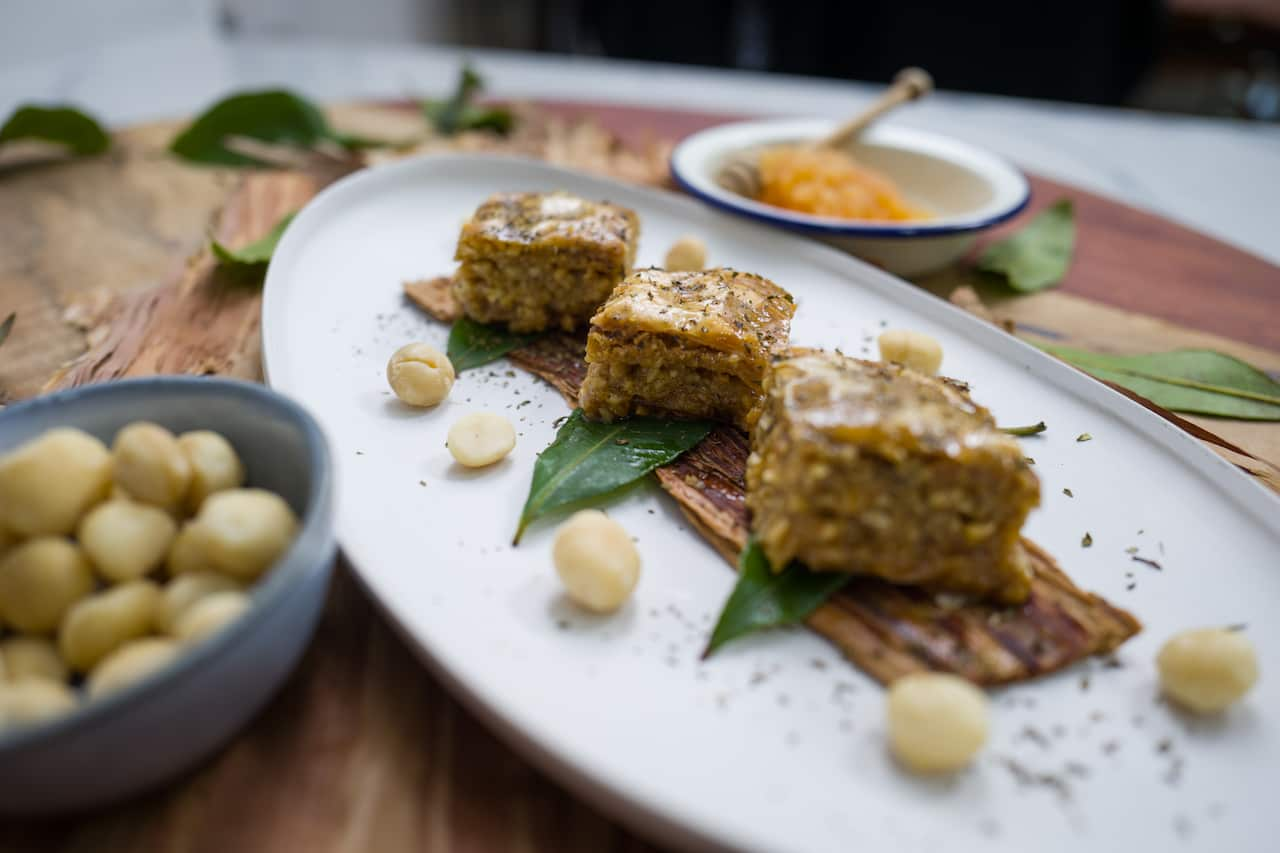
Macadamia Baklava by Mark Olive (Supplied) Source: Supplied
Originating in the Middle-East, with ties to Greece also, baklava has many recipe variations depending on country and culture. Particularly when it comes to nuts. In Albania, they use walnuts; in Jordan, it's often pistachios, for example.
Australia has had a difficult relationship with our prized nut — the macadamia — since 19th Century cultivars began importing them abroad. What originates from this country, is now mostly commercially produced in South Africa and consumed by the United States!
In one bite? Bringing back our national treasure and finding their buttery — almost coconutty — flavours a home in filo pastry layers.
Lemon Aspen & Sea Urchin Roe En Croute
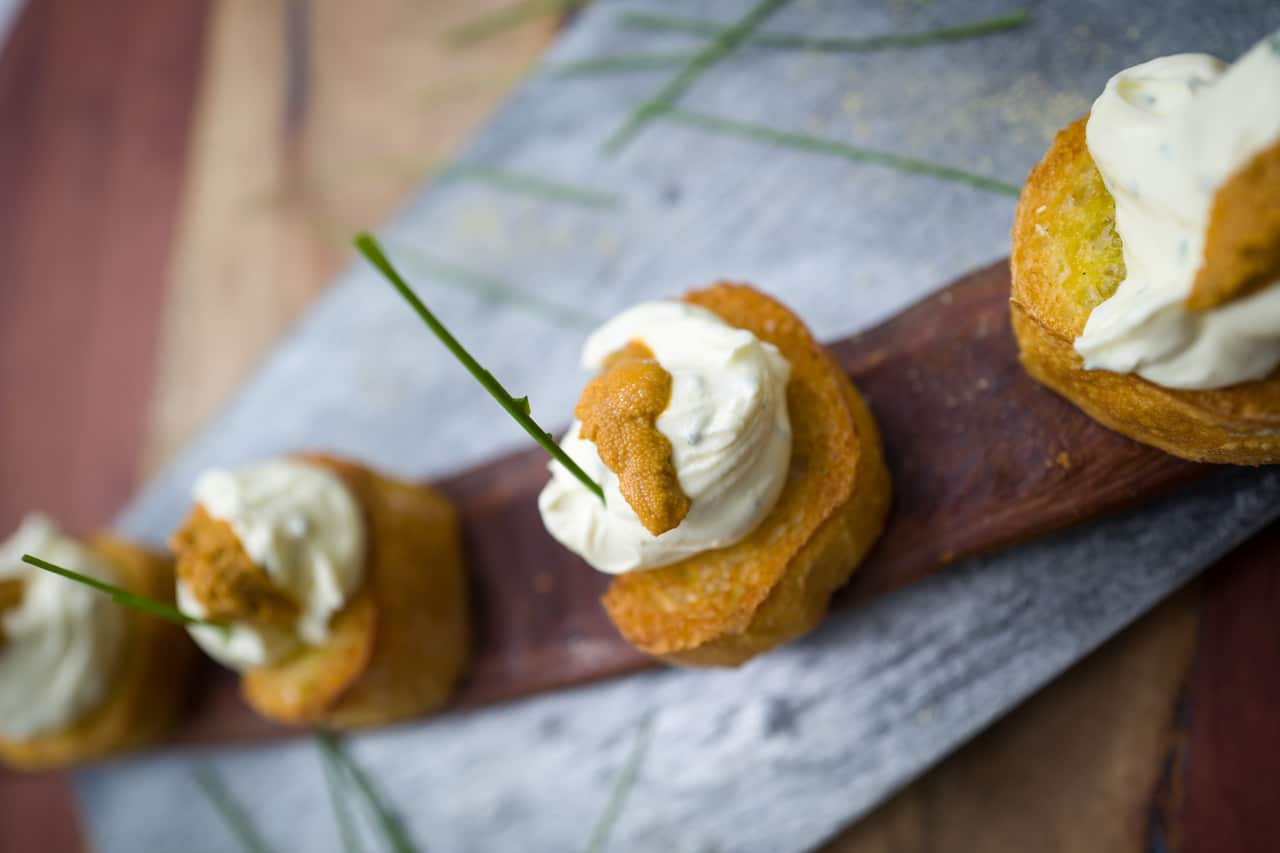
Sea Urchin En Croute by Mark Olive (Supplied) Source: Supplied
Hailing from France, 'en croute' literally translates as "in a pastry crust", and is the culinary art of wrapping something in pastry and baking it.
This popular European cooking method has been around for centuries. Different regions have different traditions in terms of filling. Generally, it's a pate-style meat of either pork or veal and even rabbit is very common.
Admittedly, to call Olive's dish 'en croute' is a stretch, considering the key fundamental is lacking — pastry. However, he's certainly offered a tasty crust and executes french-style cooking, using sliced baguettes decorated with delectable dollops.
While many of us champion Australia's Lemon Myrtle, our country has another lovely lemony offering. Lemon Aspen is a small round fruit native to forests of northern Queensland. It has a tart lemon-grapefruit flavour, with undertones of eucalyptus.
In one bite? Delightfully creamy, salty with a crispy crunch. It's the aromatics of the Queensland tropics meets rich French indulgence.
Lemon Myrtle Vegetable Tempura
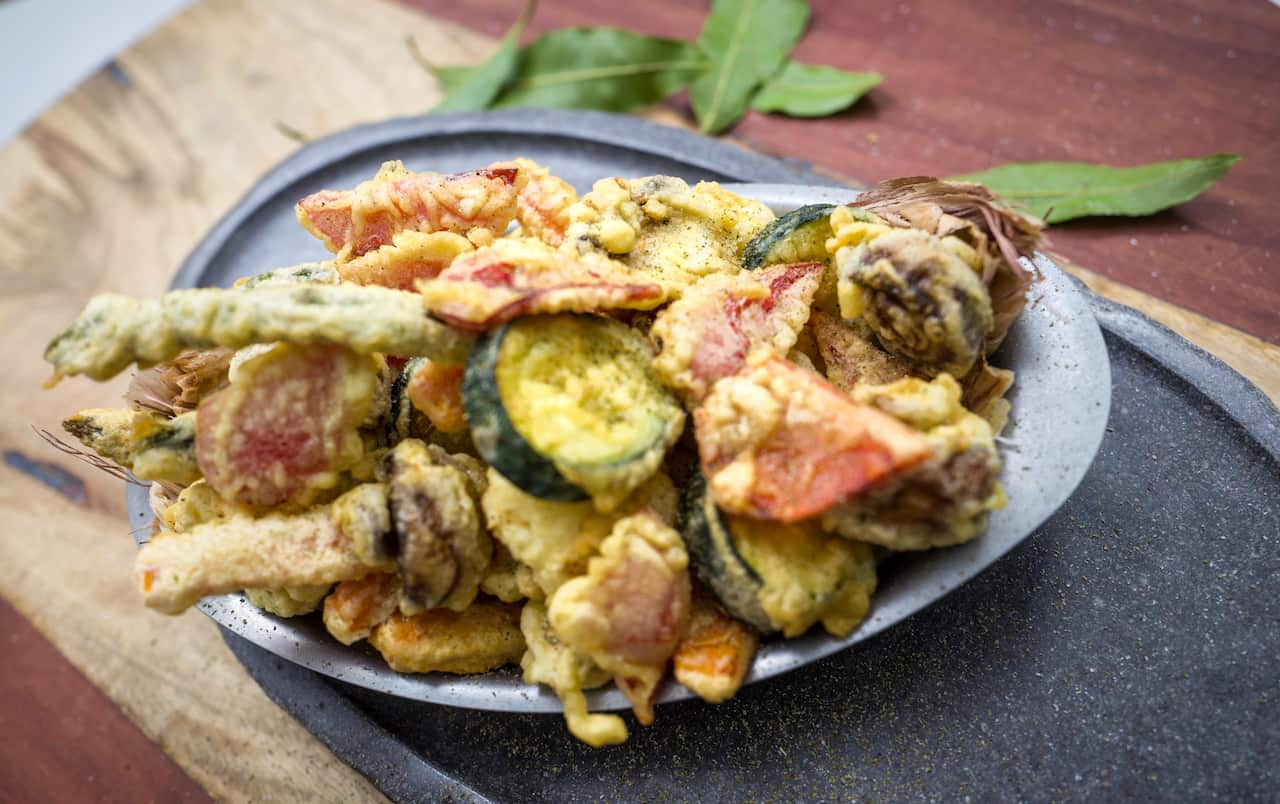
Vegetable Tempura by Mark Olive (Supplied) Source: NITV
Let's face it. Everything tastes better battered. But unlike your traditional British Fish and Chips which has a thick, protein-rich coating of cornstarch and yeasty beer, tempura has a unique light batter made from ice-cold water and low-gluten soft flour.
Lemon myrtle is possibly the most commonly known Australian native ingredient. Its perfumey, citrus aroma which long lingers in your mouth, is used in both sweet and savoury cooking (as well as heaps of soaps and other gift shop items). Overpromoted? Maybe. Overrated? Absolutely not. There's a reason this flamboyant herb has such a cult following.
In one bite? Meet the more charismatic, more attractive cousin of the rosemary roast veg.
Spaghetti with warrigal pesto
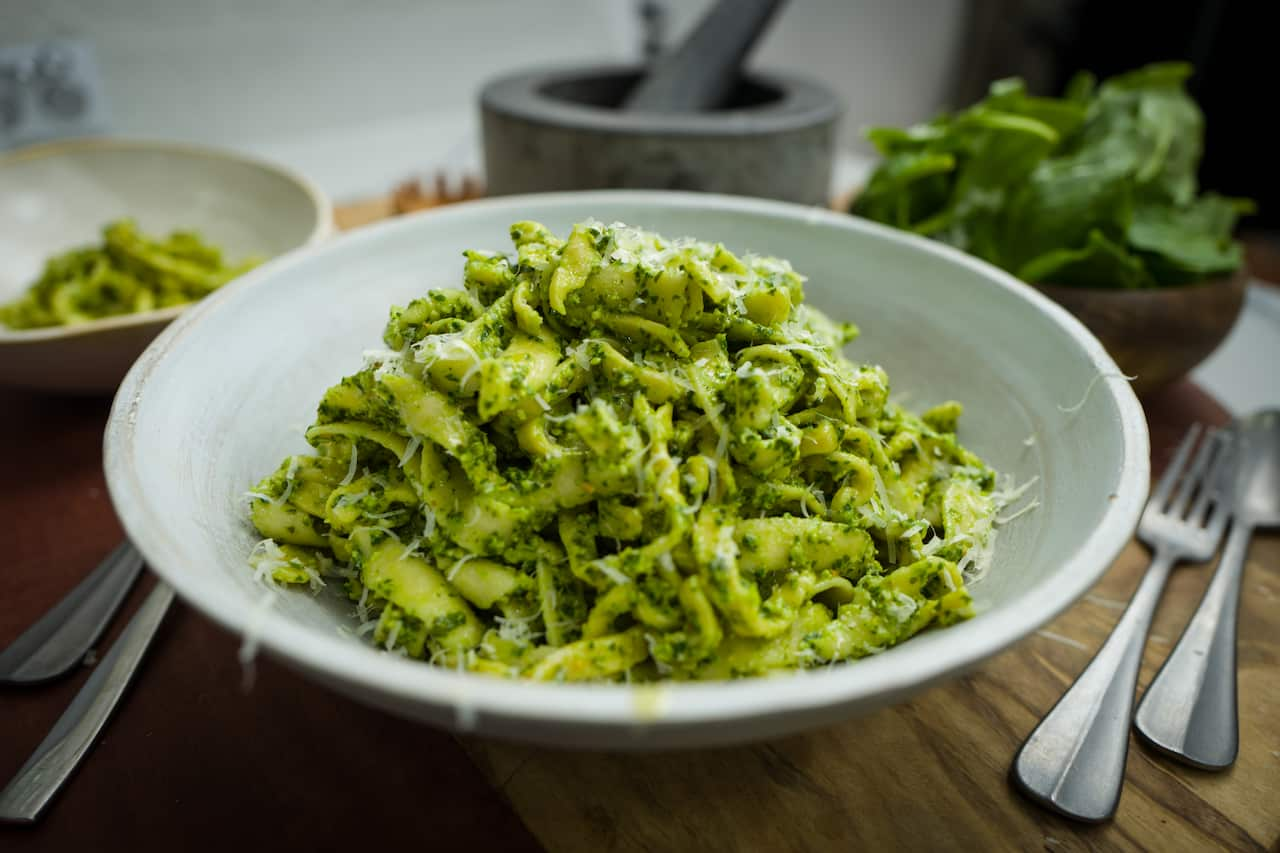
Warrigal & Sorrel Pesto Spaghetti by Mark Olive (Supplied) Source: NITV
You hear a lot of celebrity chefs advising that "simple food" is often the best food. And Pesto is one shining example. Basil, pine nuts, garlic, hard mature cheese and fatty olive oil brings pasta alive with vibrant colour and mouth-watering aromas. It may be the very basic of ingredients, but it's a culinary icon.
While we'd all like to have the patience of skilled Nonnas who pound the ingredients using the traditional method, 'Pesto alla blended in the magic bullet' is probably more accurate in 21st Century kitchens.
Endemic along the coast of Australia, Warrigal greens are a leafy treat that can be found and foraged. While they're known as fantastic spinach alternative, they carry their own unique grassy, salty herb flavour. It pounds, blends and most importantly, eats well, packed with Vitamin C and iron.
In one bite? It's classic comfort food conveying the coastline.
Kriol Kitchen and On Country Kitchen airs Wednesdays from 7.30pm on NITV (Ch. 34). Catch-up is available on SBS on Demand.

